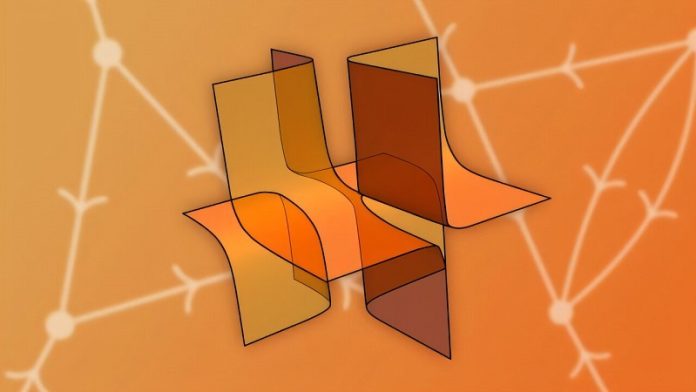
What do the tiniest building blocks of matter and the vast structure of the universe have in common?
According to new research, both can be described using the same mathematical ideas.
Mathematicians Claudia Fevola from Inria Saclay and Anna-Laura Sattelberger from the Max Planck Institute for Mathematics in the Sciences have shown how algebraic geometry—a branch of mathematics that studies shapes defined by equations—can help us understand everything from particle collisions to the evolution of the cosmos.
Their work was recently published in the Notices of the American Mathematical Society.
Mathematics and physics have always been closely connected. Physics provides the mysteries, while mathematics supplies the tools to describe them.
This partnership is particularly important in quantum field theory and cosmology, where cutting-edge math often develops side by side with new physical theories.
Fevola and Sattelberger explore how certain algebraic structures and geometric shapes can describe processes at opposite ends of scale: the high-speed interactions of particles in accelerators and the cosmic patterns that shaped the early universe.
A key idea in their work is “positive geometry,” an emerging field that grew out of particle physics and cosmology. Instead of relying only on traditional Feynman diagrams—familiar tools for calculating how particles scatter—positive geometry represents interactions as higher-dimensional shapes.
One famous example is the amplituhedron, introduced in 2013 by physicists Nima Arkani-Hamed and Jaroslav Trnka. This geometric object encodes the probabilities of scattering events in a way that can sometimes be simpler and more elegant than conventional methods.
But the approach does not stop at particle physics. In cosmology, researchers study the faint afterglow of the Big Bang—the cosmic microwave background—and the distribution of galaxies to reconstruct the universe’s earliest moments. Here, too, positive geometries appear, in the form of “cosmological polytopes.” These objects can represent correlations in the universe’s first light, offering a new mathematical window into the laws that governed the cosmos at birth.
Far from being a mathematical curiosity, positive geometry could serve as a common language for multiple branches of theoretical physics. By turning physical processes into geometric objects, it creates a bridge between the abstract world of algebra and the observable world of physics.
Behind this lies sophisticated mathematics. Algebraic geometry describes shapes using polynomial equations. Algebraic analysis studies the complex differential equations that emerge, often through objects called D-modules. Combinatorics helps track the intricate relationships within these structures. Even highly technical objects such as Feynman integrals, once thought to be purely symbolic, correspond to real phenomena in physics and can be better understood with these tools.
Fevola and Sattelberger’s work is part of a larger international movement uniting mathematicians and physicists in exploring these connections. “Positive geometry is still a young field, but it has the potential to significantly influence fundamental research in both physics and mathematics,” they write. The challenge now is to refine these ideas, validate them through further collaboration, and see how far this new mathematical language can reach.
What is at stake is more than just better equations. Positive geometry may give us a way to unify our understanding of nature across scales—from the dance of subatomic particles to the grand architecture of galaxies.
In doing so, it could help reveal the hidden shape of the universe itself.



